Cometcatcher from Bratislava
Since his graduation from Colby College (US) in Computer Science he has been earning his living as a web application developer. Nevertheless, his true passion is celestial wonders. Although he does not give lectures, he succesfully popularizes astronomy by distributing latest observation data from professional observatories to high schools all around the world. This way he enable students to learn scientific research firsthand. After long decades of waiting, another name from Slovakia was added to the comet discoverers list thanks to him.
Tomas Vorobjov.
You graduated from Colby College, Maine, USA. How can a Slovak teenager get to
study at such a school ?
When I was a sophomore in high school in Bratislava I found an announcement about
the possibility of studying abroad at a United World College (UWC) posted on a
bulletin board at school. I applied, went through a selection process which involved
psych tests, personality tests, knowledge tests and some more psych tests, and I
was selected to go to the United World College of the Adriatic in Duino, Italy.
There, I spent the last two years of high school and received a high school diploma
called the International Baccalaureate (IB). Prestigious US colleges and universities
like to admit students graduating from IB so knowing my chances I've applied to
five schools. I was offered a full scholarship at Colby College, Waterville, Maine,
where I spent the next four years of my life.
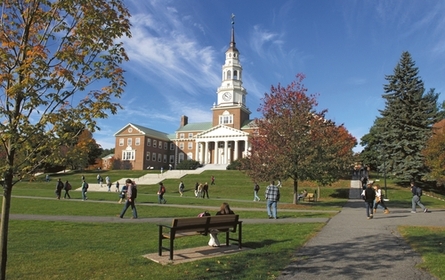
Foto: Colby College
You started to work in New York, later you moved to London. Last summer you escaped
the Olympic Games hysteria and returned back to Bratislava. However, throughout all
this time you worked as a software engineer. What do you really do?
When I graduated from Colby as a Computer Science and Math major I found a job as
a web application developer for a digital agency called R/GA in New York. I worked
in New York from September 2006 until May 2007 when my work permit expired - all
international students of 4+ year university programs in the US receive a 12-month
work permit called the OPT as a part of their student visa. When my OPT expired and
I didn't receive the H-1B visa (a continuation of OPT) R/GA relocated me into the
new office in London, UK. I worked here until July 2012, first for R/GA, later
for a few different companies on as a freelancer mostly just working on a single
project and then moving on.
You observed Perseid meteor shower at age 8. As a 12 year-old you were captivated
by bright Hale-Bopp comet, then you observed the total solar eclipse. Those events
might lead you to the decision to became an astronomer. Yet, you studied information
technology instead. Why?
I did study physics and astronomy at Colby. There were only two astronomy courses,
first one was too elementary. The other was quite easy as well as I already had
had experience working with telescopes, CCD camera, and CCD data reduction and
analysis. A major discouraging factor in continuing on the astronomy path was the
US citizenship requirement for virtually all summer programs, jobs and interships
in Astronomy. Basically all such opportunities are through REU (Research Education
for Undergraduates) provided by the National Science Foundation which requires all
applicants to be U.S. citizens, U.S. nationals, or permanent residents of the United
States - there are almost no exceptions.
Despite that I was a physics major until my junior year. Then I realized that most astronomy
either already was or was going to be computerized (e.g. SETI at home) and that, from
a practical point of view, diploma in Computer Science opens up a huge amount of options for job search.
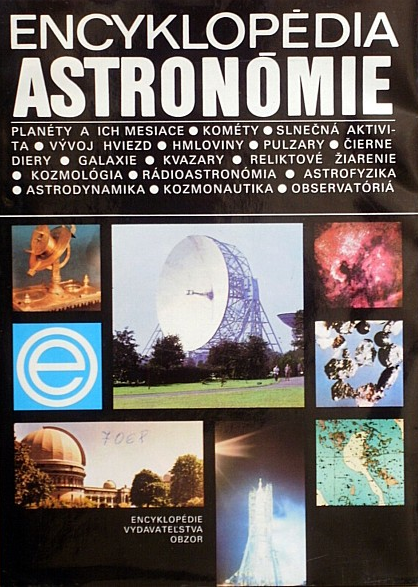 What were your references about astronomy in your childhood? Were they printed
magazines and books or you already used the world wide web?
What were your references about astronomy in your childhood? Were they printed
magazines and books or you already used the world wide web?
Back in the early 90's there really was almost no internet in Slovakia, at least
not at home (from time to time I wonder how I could have lived without it - it
seems impossible right now). I remember a book or two lying on the book shelf in
our flat when I was very little, but the first astronomy book that sort of became
my "bible" was "Encyclopedy of Astronomy". I remember actually rewriting many
entries from the book into my own notebook just for fun. Besides the books the
greatest astronomy sources for me were my farther, my grandfather and my uncle, who was a renown photographer.
These days internet is the most popular source of information, although not the most reliable sometimes. You created a web portal "The Astronews Daily" to inform about latest news. How did you get this idea? I reckon it was a piece of cake for a web developer ...
Actually, I have done very little for this one. It uses services provided by the Paper.li web portal which basically aggregates tweets based on user defined rules from the previous day. All I did was to set up the rules, ie which twitter users and tweet in which topics should be included. And the result you can find daily on
Astoronews Daily.
Do you remember your "milestones" on your way in astronomy?
With my dad, we spent more than a few nights stargazing and observing meteors in the backyard of my grandparents house in Vazec, Slovakia (away from city lights). I remember being quite disappointed to sleep through the predicted Perseids maximum in 1992.
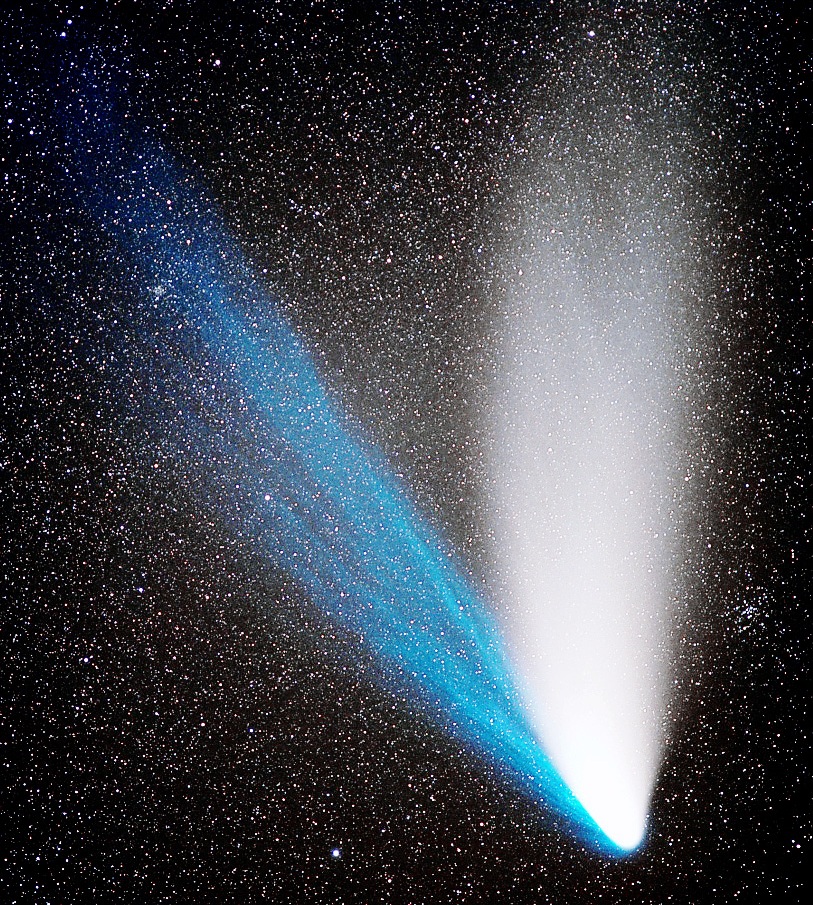
Then came C/1995 O1 (Hale-Bopp), I believe that no one who has seen it will every forget that view. Maybe we will get a similar show next year with C/2012 S1 (ISON), who knows. Year 1999 was quite special: the total solar eclipse passing just south of Slovakian border was definitely something amazing. I knew I had to make it to Balaton area; I didn't wanna wait until October 7, 2135 to see one in Slovakia.
Apart from the eclipse, I was also excited to have come first in the initial round of a Czech astronomy competition. Unfortunately, I was not able to make it to the second phase held at an observatory in Vyškov, Czech Republic (due to my first summer job).
How the time flies! Currently, you work together with big observatories around the world. What was your first encounter with professional astronomy?
My first experience with professional astronomy was in the summer of 2001 at the Astronomical Observatory of Modra (AGO). Every student at UWC (IB actually) has to write a dissertation essay of a sort, called the Extended Essay. I chose to write about the rotation period of a Near-Earth Object (5587) 1990 SB. Well, I didn't know at the time that that was the selected target. The idea was to collect data for some known minor planet and to try to obtain a light-curve. Photometry of asteroid is one of the primary research objectives at the observatory and RNDr. Juraj Tóth, PhD and others in the team were kind enough to share their data with me.
Asteroids were the subject of your summer essay at high school. Then 9 years passed until you focused on minor planets again.
You started your hunt in 2010 after you learned about SkyMoprh image archive. How did you find it and why did it capture your attention?
Actually, I've found this pretty good website
"How to discover an asteroid in SkyMorph archive" with many
great details and tips ... Knowing how the Astrometrica configuration settings work, how to find moving objects and determine whether they are known or unknown, how to format the MPC report correctly, etc. are all immensely helpful.
Skymorph used to be a great place for amateur astronomers in which to discover a
minor planet. I believe it still is a great place to start for anyone who would like to gain the skills necessary to make discoveries on his/her own.
You discovered 8 new asteroids from archival images. "Appetite comes with eating",
as they say, so you switched from archival to live data and continued your hunt
with rental telescopes of Lightbucket Observatory.
And this brought you further discoveries ...
Skymorph was a great source of data, but the data available through the archive was quite old. Furthermore, the rules had changed and NEAT was credited with all new discoveries regardless of who the measurers were. Most importantly, I had always planned to use it only as a learning tool and, once ready, to have a small program with my own resources and control over the observations.
I knew it would be too costly to build my own backyard observatory but fortunately, remote observing began to gain popularity and the competition between several telescope networks pushed the prices to a reasonable level. Lightbuckets was somewhat new at remote observing scene at the time. Nevertheless, the combination of high quality equipment (24" Ritchey-Chretien + CCD) and superb dark skies of New Mexico was very promising for minor planet search, and it delivered right away. I discovered 2 new objects at V21.5 (4 single 120s exposures) in the very first field I imaged (they both are on their way to be numbered). Four weeks into my observations with Lighbuckets I discovered 2010 EM34, which is now named after my girlfriend.
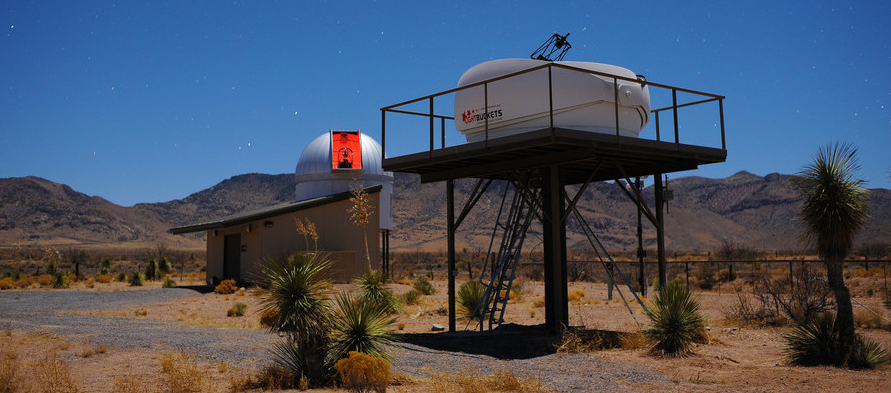
Foto: Rodeo Skies Ranch
In the same year, 2010, you learned about
The International Astronomical Search Collaboration (IASC). IASC is an educational outreach program for high schools and colleges which was founded at Hardin-Simmons University, Texas, USA in 2006. You lived and worked in New York at that time. However you joined this project 4 years later. How did it happen?
I spent a substantial amount of time researching what other observers of minor planets were doing, what kind of facilities they had. I read their discovery stories. One can always learn something new just by reading about the experiences of others. In all this reading I came across the pages of the The Astronomical Research Institute (ARI). I read about ARI's involvement in the education outreach program with the IASC. From the IASC pages I learnt that it was run by volunteers so I decided to write to Patrick (the IASC founder and director) asking him about the possibility to join the team. And he said yes.
What is your role at IASC?
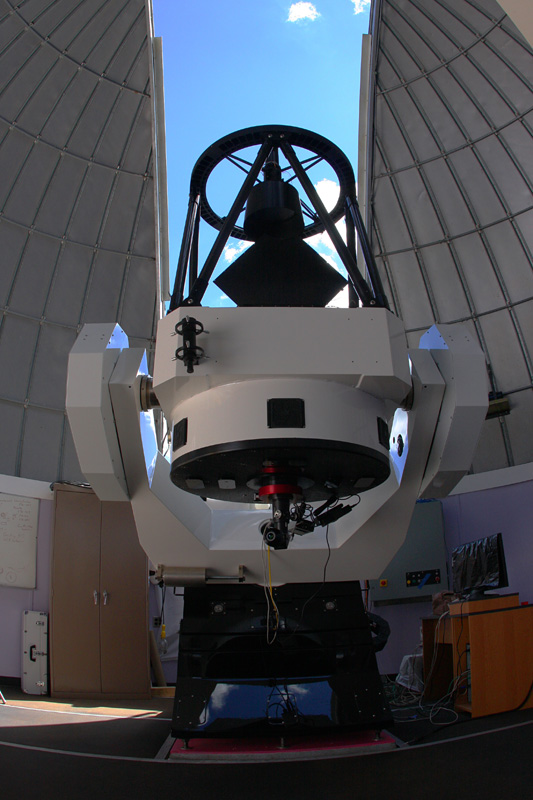 I'm the director of the IASC Data Reduction Team (IDaRT). I download images from
the telescopes in our network, measure all moving objects and report them to the Minor planet Center (MPC). Once that is done, the data is distributed to schools via the Internet. When students identify some new objects themselves (independently of our analysis) IASC shares the discovery credit with them and, once their discovery is numbered, we invite the student discoverers to suggest a name for it.
I'm the director of the IASC Data Reduction Team (IDaRT). I download images from
the telescopes in our network, measure all moving objects and report them to the Minor planet Center (MPC). Once that is done, the data is distributed to schools via the Internet. When students identify some new objects themselves (independently of our analysis) IASC shares the discovery credit with them and, once their discovery is numbered, we invite the student discoverers to suggest a name for it.
Last year, we worked with about 500 schools from 45 countries through five-week long campaigns. Some received data from our primary source, the Astronomical Research Institute (ARI), H21, since September we've been using the Mt. Lemmon SkyCenter telescope (G84) through Sierra Stars Observatory Network (SSON) and we also have two special campaigns with data from Pan-STARRS.
The measurement of all images is definitely time consuming. What does your ordinary day look like during campaign?
There rarely are days when there are no active campaigns; the schedule is very packed as we do our best to accommodate all schools that wish to participate. I do my analysis routine after every observing night, regardless of whether there is an active campaign or not. There only way in which a day with no running campaign differs from days with campaigns is that the data is not distributed to anyone.
You said that hundreds of school worldwide participate in your project. What about including few schools from Slovakia too?
The idea of a campaign with schools from Slovakia (Czech Republic and Hungary as well) has been on my mind for a while. We've already started working on putting the necessary infrastructure in place but it is a long process and it will be some time before we can offer asteroid search campaigns in this region.
Back in 1999 you took part in Czech astronomy competition Astrosoutez 99 where you performed very well,
you were at the first place with the maximum possible points after the first round.
You probably could have won the entire competition after second round. In the end
it did not happen ... you missed on visiting the Ondřejov observatory and meeting
Dr Grygar, a renown Czech astronomer, as that was the prize for the winner. More
than 10 years have passed since then, what would the appropriate prize for you be
these days? Which observatory would you like to visit and who would you like to meet?
Things didn't work out back then as I already had a summer job lined up. As there are no more maintenance flights schedules to the Hubble Space Telescope (HST) I'm out of luck there - just kidding. I would really like to visit some of world's top facilities such as the telescopes on the Canary Islands, Hawaii, in Chile, and Kitt Peak and Mount Lemmon/Catalina. I've just booked a trip into the US so I may be able to stop by the last one in May/June. Besides that a meeting with all of our IASC collaborators is long overdue; I have not met any of them in person. Finally, a visit to the MPC and meeting with Tim Spahr is definitely up top on the "wishlist".
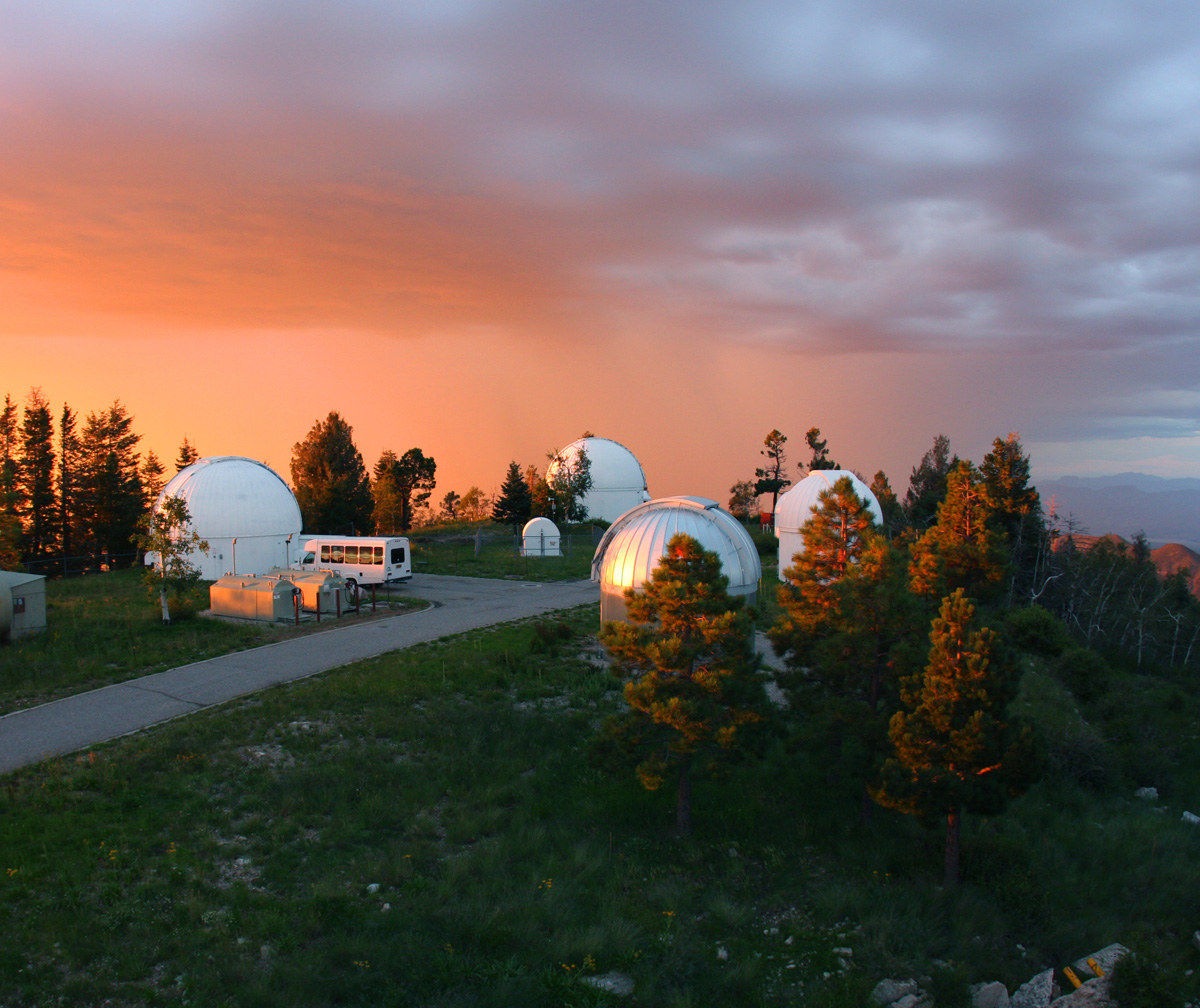
Foto: A. Block
IASC program enables students to learn firsthand about professional scientific research.
As participants in IASC campaigns they do high level astronomy work on their own.
The comet P/2012 T7 (Vorobjov) is a side product of this activity. Have you ever
thought that besides main belt asteroids you could also find a TNO or even a comet?
I think that everyone who regularly scans the sky looking for either NEOs/PHAs or just good old MBAs, secretly hopes to discover other unusual objects such as Centaurs, TNO's and comets. Of course, I always wanted one to put a sticker with name on it. To be honest I did not expect it to be this soon ... I started working with the IASC in March 2010, and on average, I'd say I looked at about 15-30 FoV's of 20'x20'x, i.e. 2-3 sq. degrees a night. That amounts to roughly a single exposure by the Pan-STARRS and/or about 2 star fields by the Mt. Lemmon survey (G96). Furthermore, given that the big surveys really do cover almost all real-estate between -10 and 30-40 degreesin declination, finding anything previously unseen in there is a somewhat of an accomplishment already.
You discovered the new comet on Oct. 15, 2012 during your routinne check of images
from the 0,80 m telescope of the Mt. Lemmon SkyCenter Observatory, Arizona. Comet
P/2012 T7 (Vorobjov) was announced on Oct. 18 after there were enough observations. Were those three days hard for you?
I give more details of the discovery circumstances in a blog post I wrote for the SSON,
but in a nutshell, after the confirmation images taken by Bob Holmes (H21) the following
night, there was no doubt the object was a comet. Then it was really only about whether it was a brand new comet or just another apparition of an already known one. I received a word from Tim that he couldn't manually find any additional observation of the comet (which, of course, did not mean they were not somewhere, but it was nevertheless encouraging). Also, I know that CBAT usually ignores prediscovery observations (for naming purposes), or if the object appeared stellar and already got a designation, it usually receives two names: one for the discoverer of the object when it appeared stellar and one for the discoverer of the cometary features - for exampe, 2011 JB15 (P/Spacewatch-Boattini). Notwithstanding all of that, I was very happy when the MPEC came out.
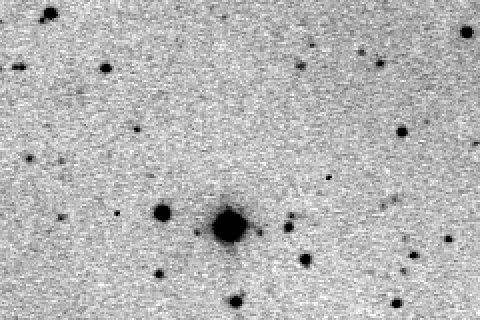
Foto: B. Holmes
You have read discovery stories of others, suddenly you should write one. What did you feel when you started to write your own story?
I was in touch with Dan Green (CBAT) regarding the naming of the comet for a few days.
He just asked a few questions about the discovery circumstances, who were there
other people on the MPC reports with observations and how t hey were involved. Other than that, the discovery story, as it appeared in the CBET 3260, was written by Dan.
The comet Vorobjov is a periodic comet with 12 years period and belongs to the
Jupiter group of comets. Unfortunately it is not visible by naked eye. Have you observed it since the discovery?
The last observations I made were using the discovery telescopes (G84) on December 9, 2012. Two other sites (130 and D90) observed the comet on December 12 and 18. I'm going to attempt to extend the observed arc a little further now (January/February). The comet should also be easily observable (
Nowadays new comets are dicovered mostly by big surveys. Only a few devoted comet
hunter use the old-fashioned visual search. Is there any chance for a new visual discovery?
Or will Pan-STARRS and its successors make all future discoveries?
There still is chance for visual discovery, albeit tiny. If I remember correctly, the last comet found visually was 2010 V1 (P/Ikeya-Murakami), which at that time was at about V8.5. Pan-STARRS is quite slow at moving forward. It is now clear that the originally planned 4 telescopes will almost surely not be built. I believe the funding has been secured for PS2, but I can't see government funding going past that especially with the LSST on the horizon. PS1 and PS2 will focus mostly on faint NEOs and PHAs therefore I imagine they'll scan the same sky as other surveys (but will be able to reach 1-2 magnitudes deeper). Thus there will be quite some real-estate to search for comets, especially past 50-60 degrees in declination. Now, once LSST comes fully online (if it does at all), I think that would most likely be a game over not only for visual discoveries, but most likely for all amateur discoveries (unless someone can build a >1m telescope).
What do you think about the comets C/2012 S1 (ISON) and C/2011 L4 (Pan-STARRS)
which are heading toward their perihelion? Will they produce similar extravaganza
like the comet Lovejoy did for southern hemishpere astronomers during Christmas 2011?
There is no doubt that both will deliver a great show. I would like nothing else
than to see another great spectacle like of which we, at northern hemisphere, have
not seen since 1997 (Hale Bopp). Nevertheless, I'm a bit sceptical about the most
optimistic predictions especially since comets can be very unpredictable in this
regard. Besides there is always a chance that ISON won´t survive its passage through the perihelion.
But the newest data has shown a decrease in brightening well below the optimistic curve and if I remember correctly the new prediction is somewhere between 0 and -5.
To discover a new comet one day, is a dream of many astronomers. Now that you did,
what is your next item from your wishlist?
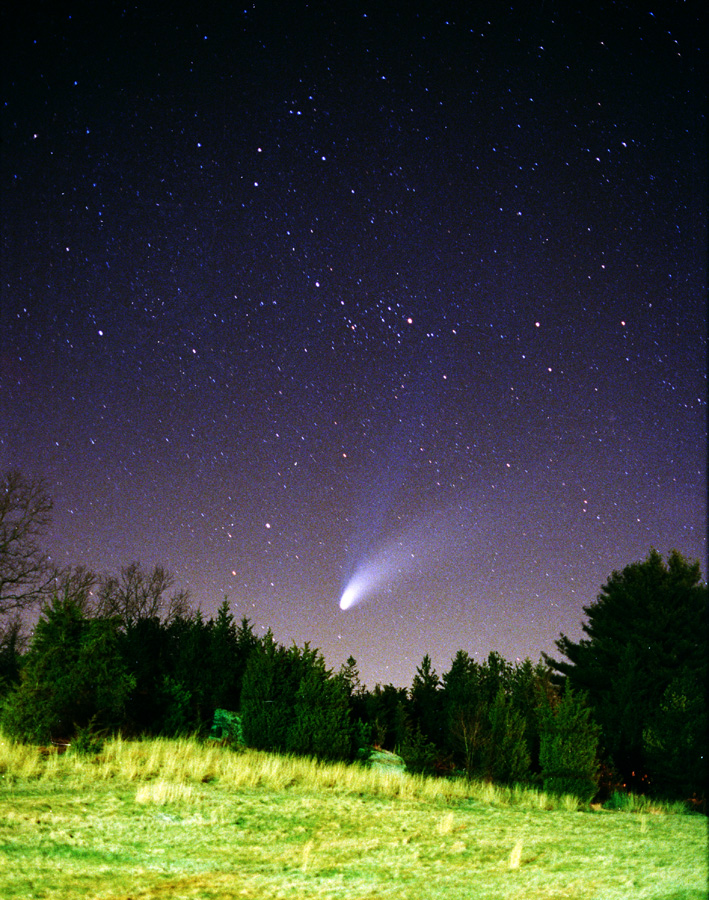 There is always the next comet. I would definitely like to find one that will deliver a spectacular view similar to what Hale-Bopp did in 1997. Also, there are still many interesting NEOs, PHAs and TNOs waiting to be added to the MPCOrb list.
There is always the next comet. I would definitely like to find one that will deliver a spectacular view similar to what Hale-Bopp did in 1997. Also, there are still many interesting NEOs, PHAs and TNOs waiting to be added to the MPCOrb list.
In 2013 we have big expansion plans with IASC. I'll be developing a web portal and an exciting new citizen science project, through which one day soon, public volunteers will make their first NEO discoveries. This should be a spectacular year for us.

